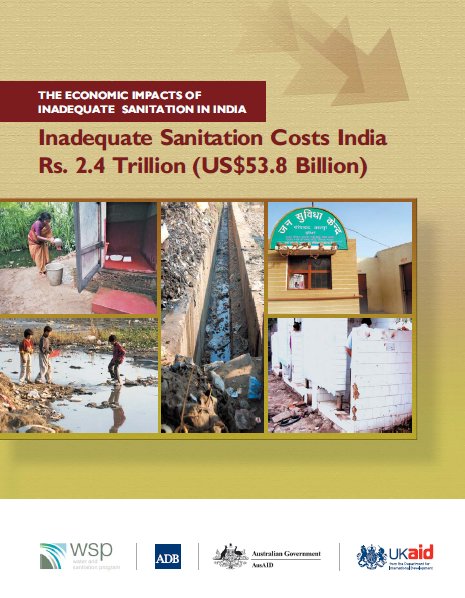
Published in: 2006
Publisher:
World Bank, Water and Sanitation Program (WSP), USA
Author:
Tyagi, A., Hutton, G., Sen, S.
Uploaded by:
SuSanA secretariat
Partner profile:
common upload
5111 Views
17 Downloads
Location of library entry
Content - Summary
Sanitation is broadly defined to include management of human excreta, solid waste, and drainage. The ESI India study focused on the safe management of human excreta and associated hygiene behavior. This is not to discount the importance of the other aspects, but to focus on the key dimensions that cause a substantial health burden on Indians, especially poor people and children.
The United Nations-World Health Organization Joint Monitoring Programme for Water Supply and Sanitation defines ‘improved’3 sanitation as: the means that hygienically separate human excreta from human contact and hence reduces health risks to humans. Inadequate sanitation is thus the lack of improved facilities (toilets, conveyance, and treatment systems),
and hygienic practices (for example, hand washing, proper water handling, personal hygiene, and so on) that exposes people to human excreta and thus to disease-causing fecal-oral pathogens through different
transmission pathways.
Bibliographic information
Tyagi, A., Hutton, G., Sen, S. (2006). The economic impacts of inadequate sanitation in India. World Bank, Water and Sanitation Program (WSP), USA
Filter tags
East Asia & Pacific English














